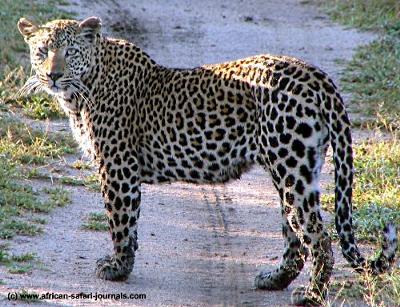Login form
Leopard
 Leopard, large, agile member of the cat family known for its spotted fur, climbing skills, and secretive habits. A superbly designed predator with a long, well-muscled body, powerful limbs, and broad paws, the leopard combines the power and strength of the big cats with the grace and versatility of the smaller cats.
Leopard, large, agile member of the cat family known for its spotted fur, climbing skills, and secretive habits. A superbly designed predator with a long, well-muscled body, powerful limbs, and broad paws, the leopard combines the power and strength of the big cats with the grace and versatility of the smaller cats.
Leopards are highly adaptable and are found over much of Africa and southern Asia, sometimes living undetected close to human settlements. The name leopard comes from the Greek words for lion (leo) and panther (pardos). “Panther” and “leopard” are names for the same kind of animal, but “panther” is most often used for a leopard born with black fur (black panther).
Physical Description
 A typical male leopard weighs about 60 kg (132 lb) and stands 65 cm (25 in) at the shoulder. Females are about a third smaller, weighing approximately 40 kg (88 lb) and measuring 50 cm (20 in) at the shoulder. Like jaguars, pumas, and tigers, leopards vary greatly in size according to where they live. In general, leopards living in open areas are larger than those living in forests.
A typical male leopard weighs about 60 kg (132 lb) and stands 65 cm (25 in) at the shoulder. Females are about a third smaller, weighing approximately 40 kg (88 lb) and measuring 50 cm (20 in) at the shoulder. Like jaguars, pumas, and tigers, leopards vary greatly in size according to where they live. In general, leopards living in open areas are larger than those living in forests.
Two hundred years ago, it was thought that leopards and panthers were different species of cats. However, by the 20th century, scientists had established that the leopard and the panther were anatomically indistinguishable from one another, and the name panther was officially dropped—all members of the species are now correctly known as leopards. Confusingly, some people continue to refer to black leopards as “black panthers” as if they were a separate species.
The leopard’s coat and markings are similar to those of the jaguar, and both cats can be individually identified by their spot patterns and coat characteristics. The base color of the leopard’s coat varies from golden to pale tawny yellow. Black spots cover the legs, flanks and head, and rosettes, made up of circular groups of spots, cover the rest of the body. On the throat, a series of spots sometimes join to form a solid black necklace. From the chin to the tail, the underparts are white. Leopards living in forests are generally darker than those that live in arid open areas. The length and thickness of the leopard’s fur also vary with the region and climate it lives in. For instance, leopards in cold regions such as Siberia and northern Asia have long, thick fur.
-black (melanistic) leopards are common in Southeast Asia, especially in Malaysia. Black leopards are rare in Africa, but are occasionally seen in Ethiopia and in the highlands of Kenya. Both black and spotted leopards can be born in the same litter—the black form is inherited as an autosomal recessive gene to the spotted form.
Leopards are classified in the big cat genus Panthera, in which most scientists also include lions, tigers, jaguars, and snow leopards. These big cats share many similarities in their appearances and behaviors. It is thought that they all evolved from a common ancestor about 3 million to 4 million years ago. Because the split into separate species is relatively recent and the genetic differences are relatively small, genetic and molecular studies can offer contradictory information about how closely the particular species are related to each other. Researchers have found evidence showing that either jaguars or lions are the closest relatives of leopards. A study published in 2005 that compared a range of genetic information indicated that leopards and snow leopards are the most closely related of the big cats. The clouded leopard, despite its name, is not a close relative of the true leopard. The more distantly related cheetah is sometimes called the hunting leopard.
 Physically, true leopards do not have any remarkable specializations. They do not have extra powerful canines like the jaguar or adaptations for great speed like the cheetah. They are perfectly “generalized” big cats, well suited for making the most of a wide range of different types of prey.
Physically, true leopards do not have any remarkable specializations. They do not have extra powerful canines like the jaguar or adaptations for great speed like the cheetah. They are perfectly “generalized” big cats, well suited for making the most of a wide range of different types of prey.
Like many of the smaller cats and unlike most of the other big cats, leopards are superb climbers, capable of scaling even the largest trees. The mark of a truly accomplished climber is the ability to descend a tree headfirst and the leopard is one of only a handful of cats that can do this. Despite the persistent folklore that they don’t like to get wet, leopards are also quite at home in the water, a trait found in jaguars and some populations of tigers. Leopards enjoy playing in the water and swim well.
Captive leopards have lived to be more than 20 years old. It is not known exactly how long leopards live in the wild but one female that was followed in a long-term study lived to 16 years of age.

